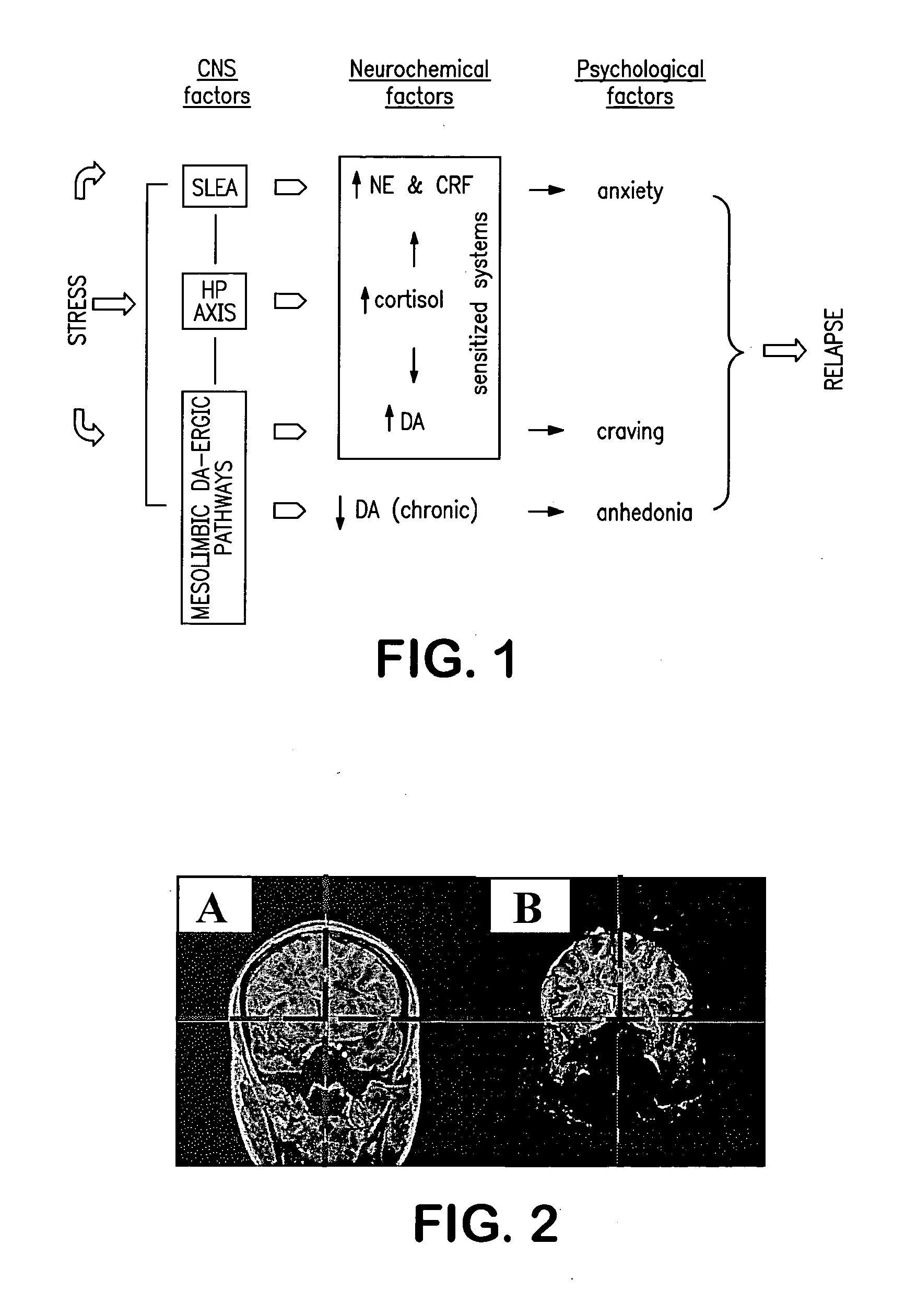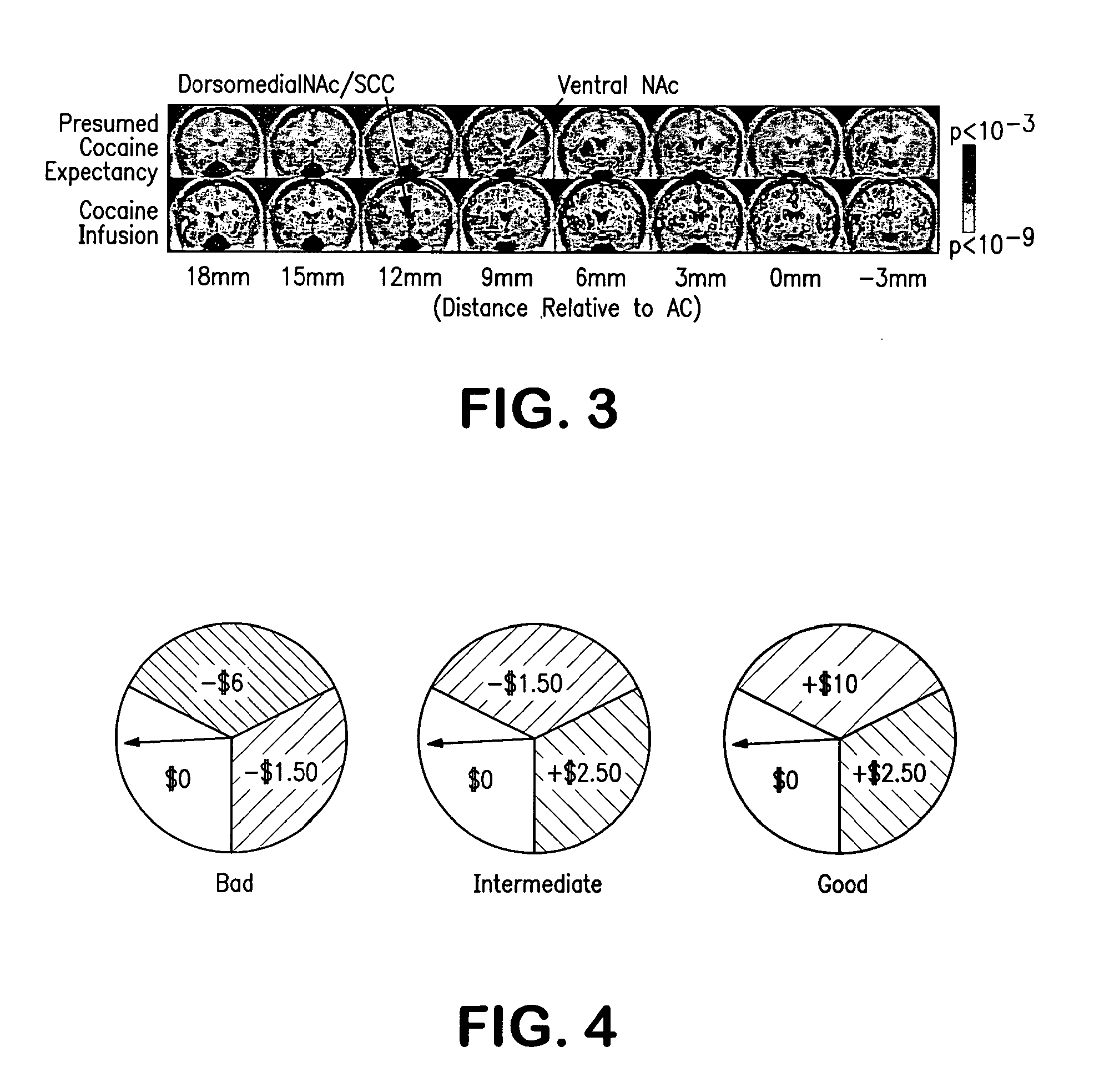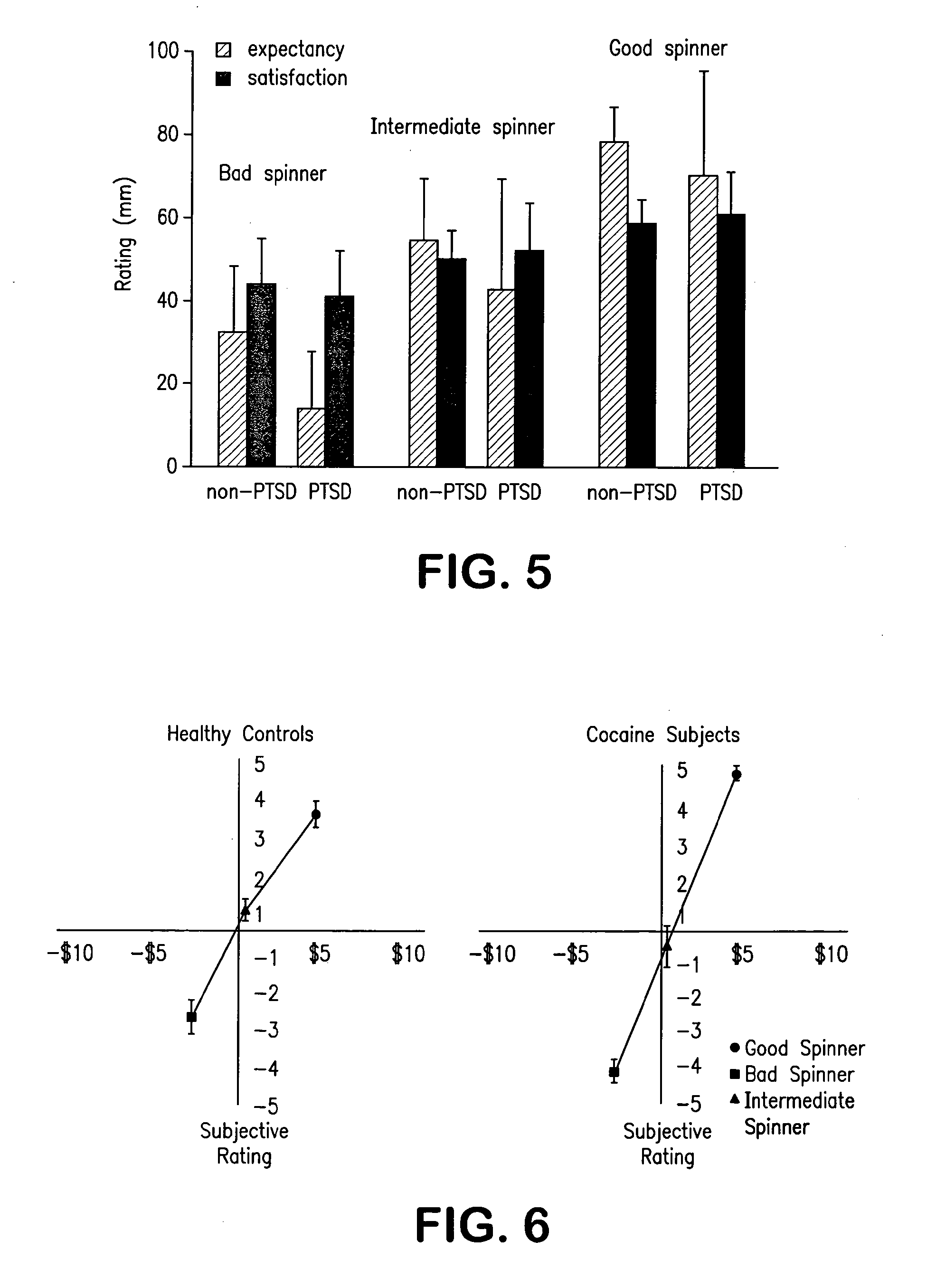Treatment of impulse control disorders
a technology for impulse control and disorders, applied in the field of mental disorders, can solve problems such as financial collapse, serious maladaptive behaviors, and ruined relationships, and achieve the effect of improving the condition of patients by reducing, alleviating, or reversing
- Summary
- Abstract
- Description
- Claims
- Application Information
AI Technical Summary
Benefits of technology
Problems solved by technology
Method used
Image
Examples
example 1
Improved Localization of fMRI Activation in the Basal Forebrain
[0051]Because NAc is a primary ROI, we sought to refine its (and other regions) visualization on the functional scans. Other key components of reward circuitry, including VT, NAc, amygdala and mPFC, are located in the regions of significant magnetic field inhomogeneity caused by nearby air-tissue interfaces in the sinuses and mouth. In echoplanar images (EPI; as used in fMRI) this results in signal reduction and severe non-rigid body deformation of images, a problem that is more pronounced in high field (≧3T) scanners. fMRI images are of low resolution and contrast, so activations are mapped onto to high resolution anatomic scans. However, the mapping between standard anatomic and fMRI images is spatially variable in the presence of inhomogeneities, and activations in the basal forebrain are quite displaced relative to the high resolution images. Spatial transformations, such as Talairach warping, could magnify this prob...
example 2
Multimodal Assessment of Reward Function in SUDs
[0052]This study used behavioral probes to assess: a) whether incentive sensitization for drugs spills over to non-drug rewards, and b) whether patients with SUDs are more sensitive to stress in comparison to healthy subjects.
[0053]To address these questions, non-drug psychosocial and biochemical probes of reward function were administered to the same four groups of male participants with alcohol (N=19; age=34.5±1.16) and heroin (N=20; age=28.1±1.11) dependence along with occasional alcohol / heroin users (N=20; age=27.6±0.7) and healthy controls (N=24; age=27.1±1.07). Four distinct experimental paradigms employed in this project included: a) sucrose solutions administered in the context of the sweet preference test, social reward tasks in the form of visual processing of b) attractive vs. average faces and c) positive vs. aversive images (IAPS), and d) monetary incentive stimuli incorporated into a gambling task.
[0054]For the key-press ...
example 3
Expectancy Effects Versus Pharmacological Effects
[0057]It is believed that the VT to NAc circuitry is involved with the prediction of rewarding events. To evaluate this possibility, we analyzed the pre-infusion baseline before the anticipated cocaine infusion. Both individual analysis, and analysis of averaged data, revealed pre-infusion activation of the ventral region of the NAc (FIG. 3), approximating the shell region of the NAc in primates and humans to which project medial VT neurons involved with reward prediction. This activation occurred prior to both the cocaine and saline infusions, i.e., a 50% expectancy condition. Notably, this ventral region of the NAc did not activate in response to cocaine infusion, and subjects reported no consistent concurrent subjective effects of rush, high, low, or craving. These data demonstrate the dissectability of reward function into expectancy and outcome domains and underscores the heuristic value of the type of the monetary stimulus parad...
PUM
| Property | Measurement | Unit |
|---|---|---|
| Concentration | aaaaa | aaaaa |
| Cell angle | aaaaa | aaaaa |
| Biological properties | aaaaa | aaaaa |
Abstract
Description
Claims
Application Information
 Login to View More
Login to View More - R&D
- Intellectual Property
- Life Sciences
- Materials
- Tech Scout
- Unparalleled Data Quality
- Higher Quality Content
- 60% Fewer Hallucinations
Browse by: Latest US Patents, China's latest patents, Technical Efficacy Thesaurus, Application Domain, Technology Topic, Popular Technical Reports.
© 2025 PatSnap. All rights reserved.Legal|Privacy policy|Modern Slavery Act Transparency Statement|Sitemap|About US| Contact US: help@patsnap.com



